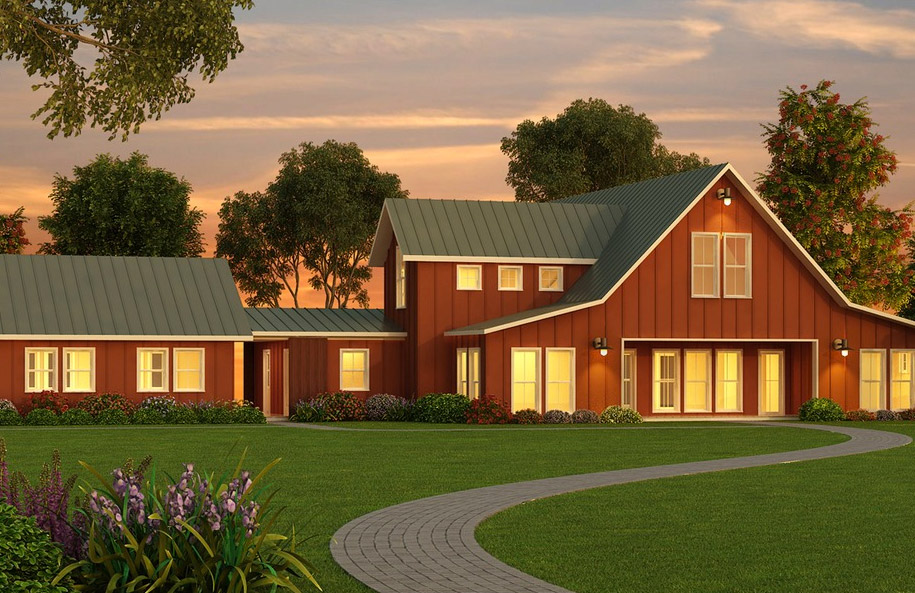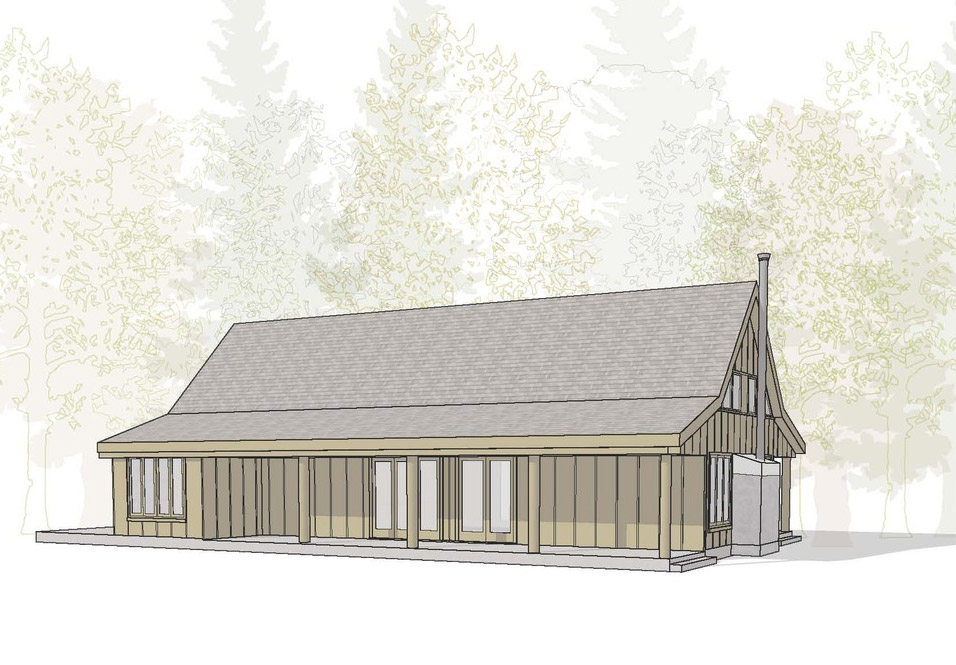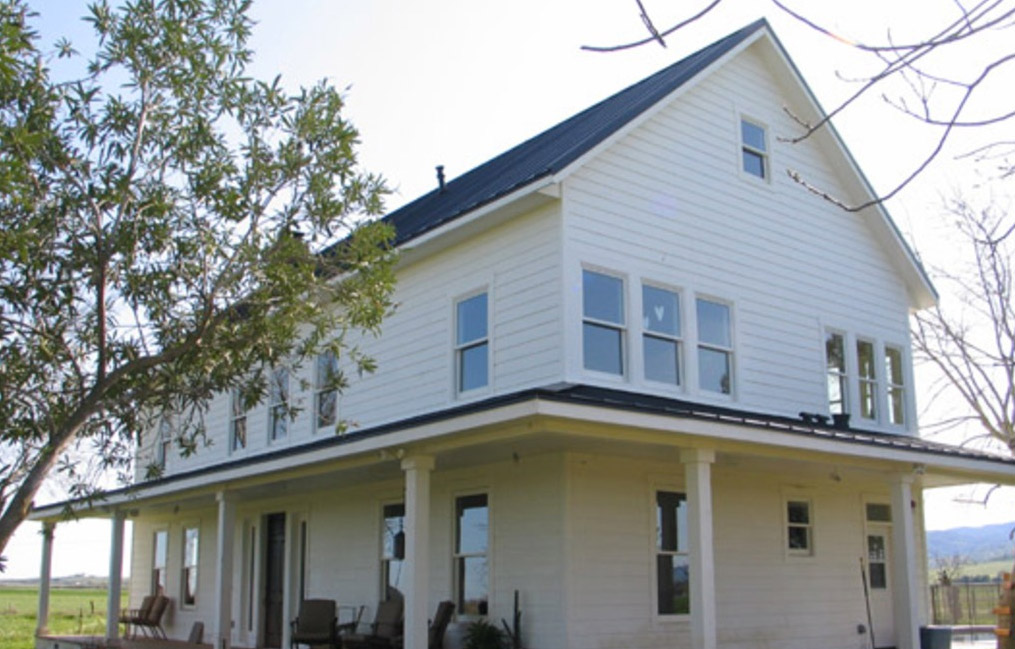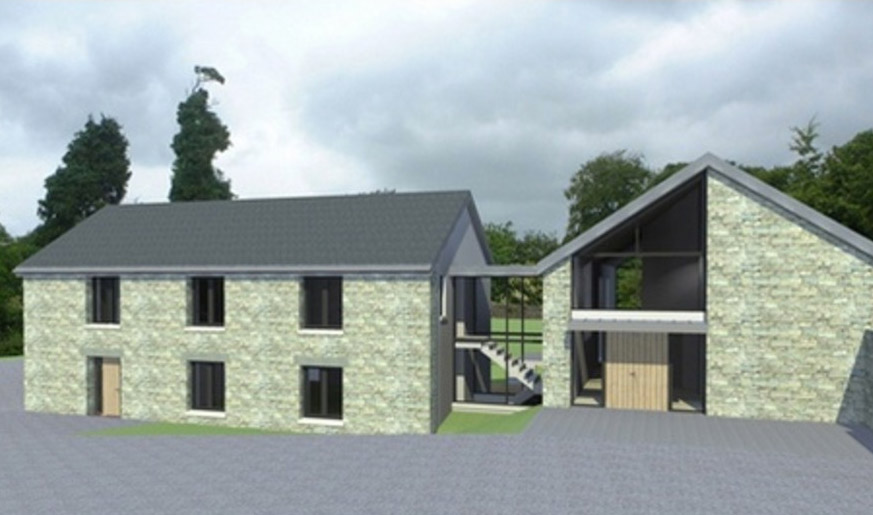Green House of the Month: A Respectful Retreat in Celo, North Carolina
A mountain home is gracefully sited to work with the topography and with the needs of its neighbors.
Located downslope from a steep ridgeline in the Blue Ridge Mountains, this month’s featured green home was selected because of its respectful and diligent site placement, conscientious construction process, energy- saving features, water conservation features, and use of regional materials.
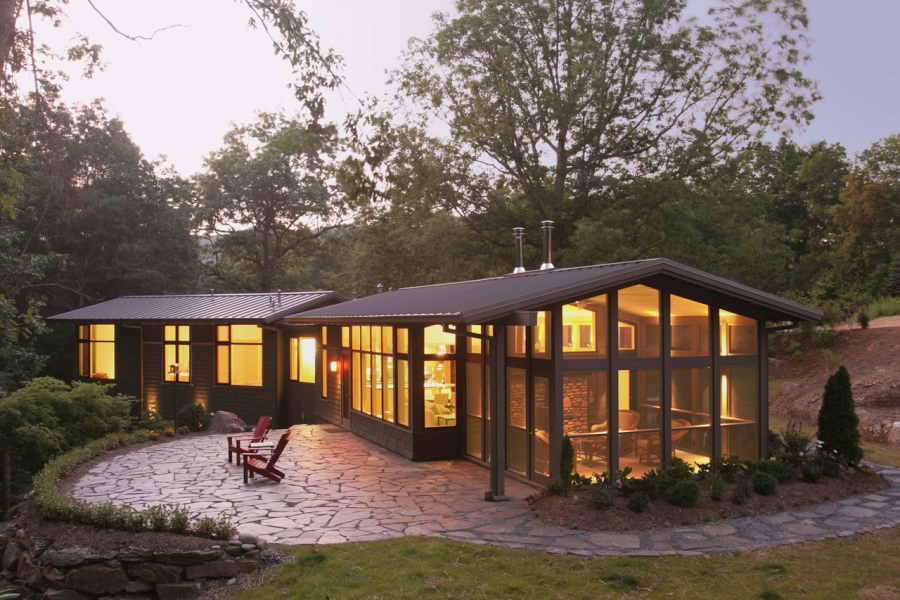 Image courtesy of Fine Home Building
Image courtesy of Fine Home Building
According to Duncan McPherson, the lead architect on the project with Samsel Architects, environmentalism was an integral part of the design process, and the outcome was truly a collaborative effort between the firm and the homeowners.
Site Selection
“When it came to site selection, the homeowners had two primary concerns,” says McPherson. “They wanted to be respectful of their in-laws, who own an organic farm adjacent to the 17-acre property, and they wanted to minimize the home’s visual impact on the surrounding hillsides, out of consideration for their neighbors in this tight-knit community.”
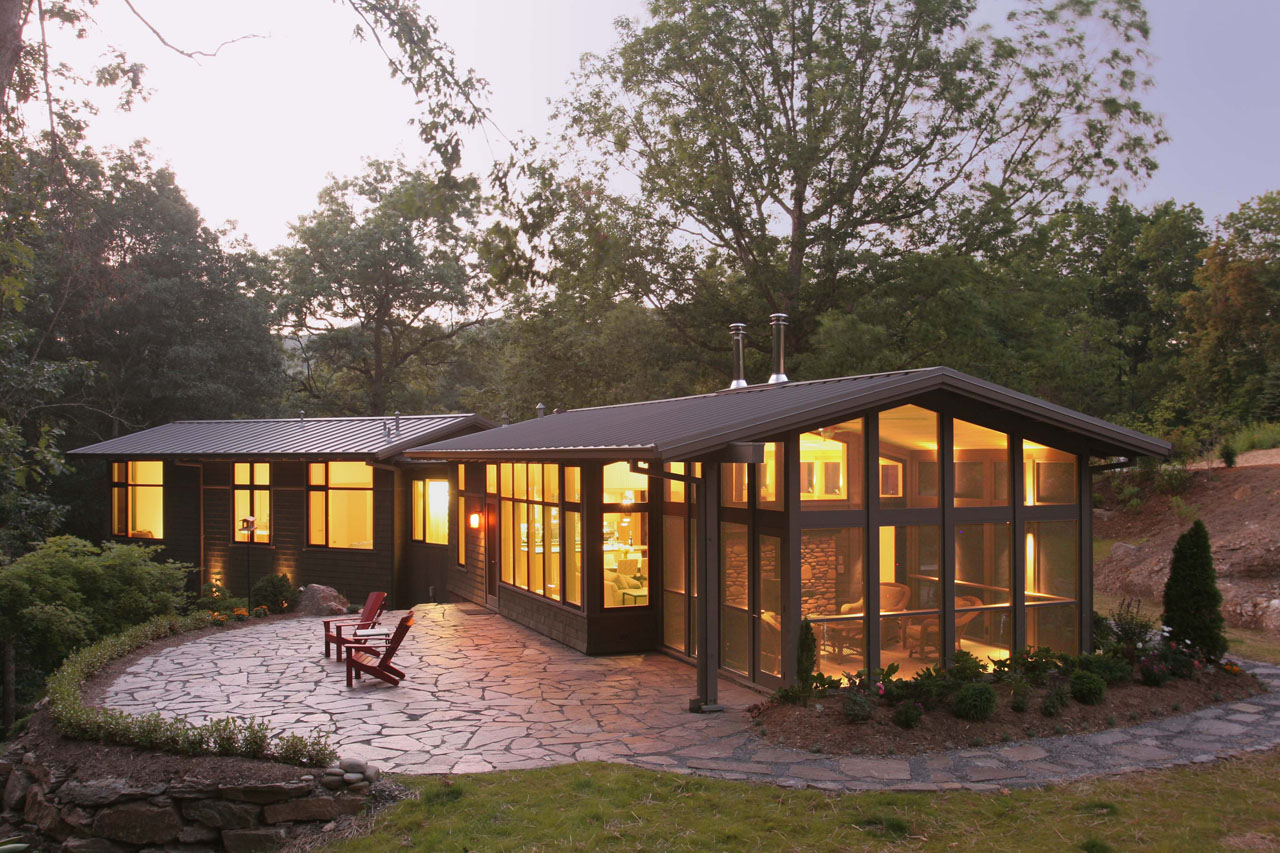
In order to avoid disrupting the water and soil quality of the nearby farm and to preserve scenic views within the community, the homeowners opted not to build directly on top of the ridge. After evaluating three potential sites on the property, they chose to build the home downslope of the ridge, along a tree line, which allowed for privacy and protection against wind exposure.
“Although the highest portion of the lot offered stunning views overlooking the South Toe River, the owners ultimately went with the location that worked best with the topography and the climate of the area,” says McPherson. “It’s not always about the best view. And it’s much better to work with the topography rather than fight it.”
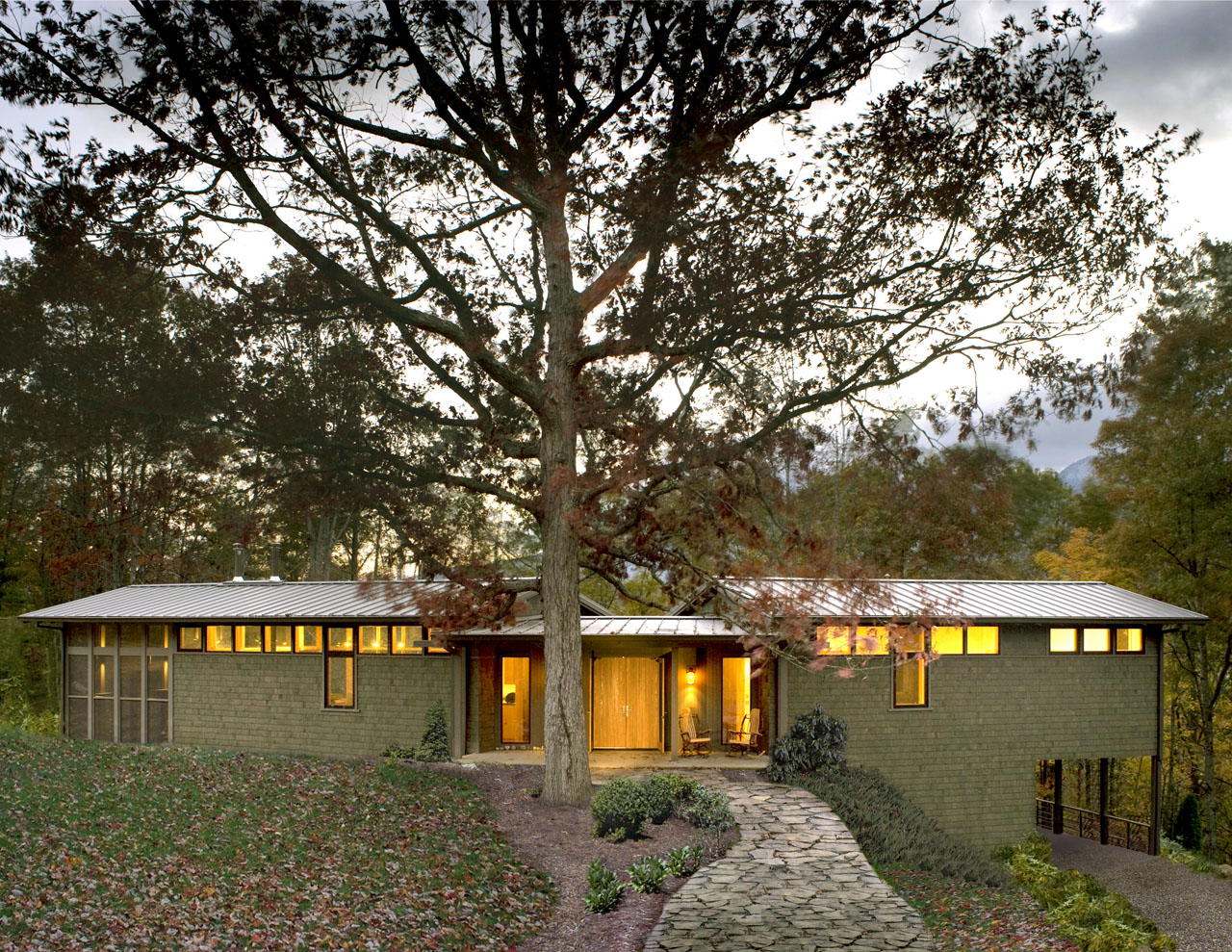
In order to protect the integrity of the organic farm on the adjacent property, McPherson explains, the contractor took special precautions during the construction process. “They were especially careful about soil and erosion control so that mud and silt didn’t end up in the nearby creeks,” he says. “They also had to make sure that the construction material and debris was carefully contained so that it didn’t end up on the farm site.”
Energy Efficiency and Indoor Air Quality
According to McPherson, Samsel Architects builds energy-efficiency measures into every project. However, the extent of the products, technology, and systems used ultimately comes down to the mindset and budget of the client.
“With this particular project, the owners were originally from California and sensitive to issues of drought, energy conservation, water quality, and indoor air quality,” says McPherson. “They were willing to invest in the building envelope, which allowed us to achieve high levels of energy efficiency and indoor air quality.”
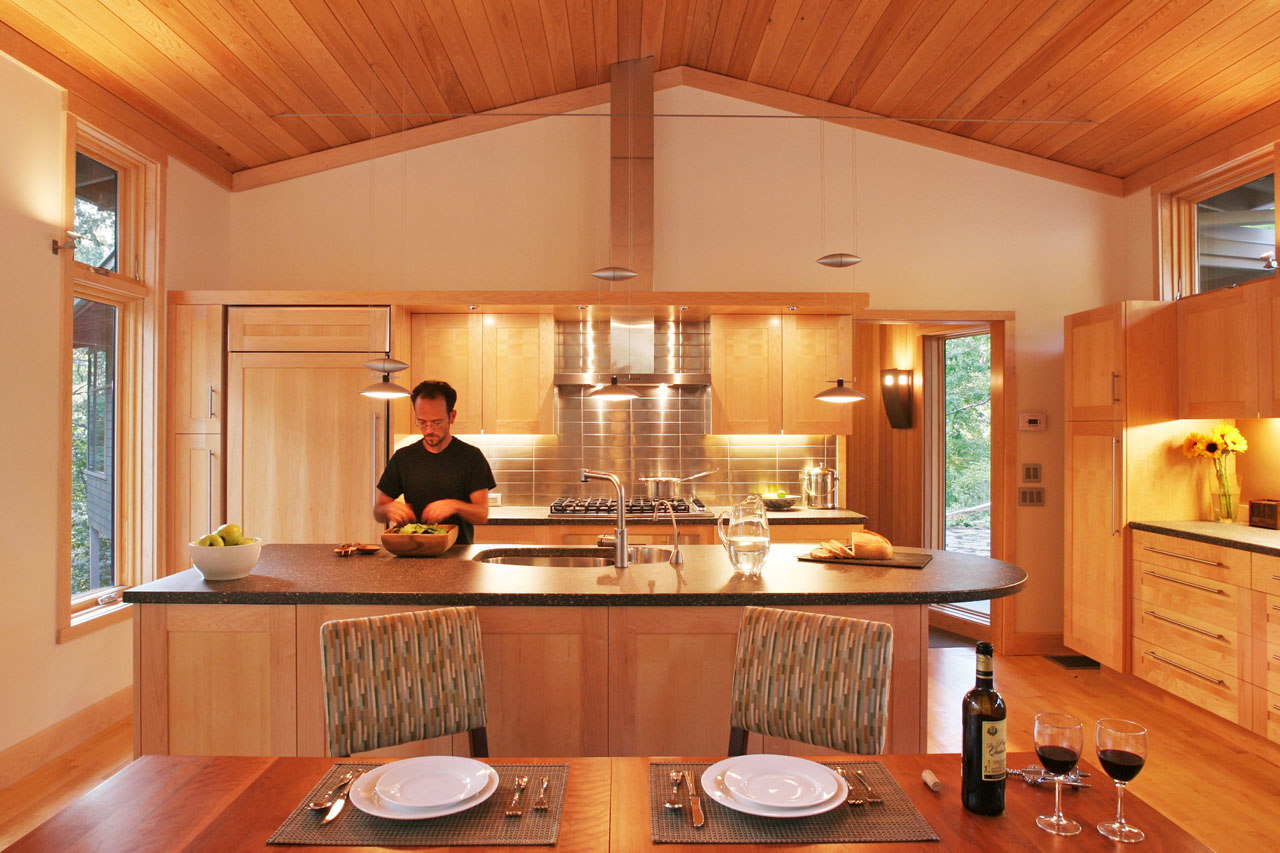
After evaluating a multitude of options and recommendations, the owner chose to use Icynene (a water-based, open cellulose expanding foam) on the walls, in the basement, and on the roof. “This product does a great job of air sealing the envelope, controlling moisture, and preventing mold,” says McPherson.
The firm also specified low-e windows and doors to reduce heat gain and loss, a high efficiency air-to-air heat pump to minimize the energy load of the HVAC system, and a dedicated fresh air intake system with a damper to prevent cold air from coming directly into the home. McPherson explains that the intake air goes directly into the heating and cooling system, which not only helps to save energy but also results in better indoor air quality.
Other energy-saving features included low-voltage lighting to reduce energy demand and high glass windows, which provide abundant ambient light and reduce electricity usage, throughout the home.
Water Conservation
To conserve water, the owners chose to utilize the majority of the metal roof as a rainwater collection system. “The gutters and downspouts tie into two underground plastic cisterns which hold up to 3,750 gallons of water,” says McPherson. “A pump pressurizes the water and pumps it to faucets on each side of the home, which are used to water the nearby garden.”
McPherson explains that water conservation also impacted other design and product choices. “When it came to landscaping, the owners went with plants and shrubs that don’t require extensive watering,” he says. “And within the home, we incorporated low-flow showerheads and faucets, as well as dual-flush toilets to help minimize water usage.”
Materials Usage
Since the home was to be utilized as a retreat, rather than as the owners’ primary residence, it was important for the team to choose long-lasting, durable exterior materials that require minimal maintenance. To this end, they chose FSC-certified Eastern white cedar shingles, fiber cement lap siding, and metal roofing that contains an average of 25% recycled content.
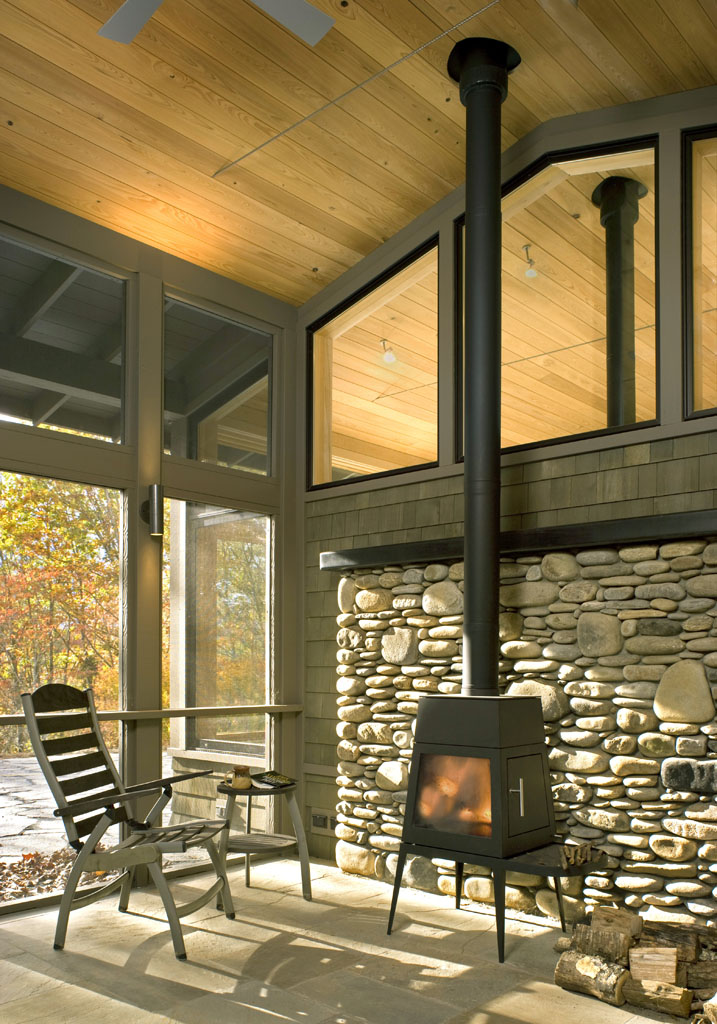
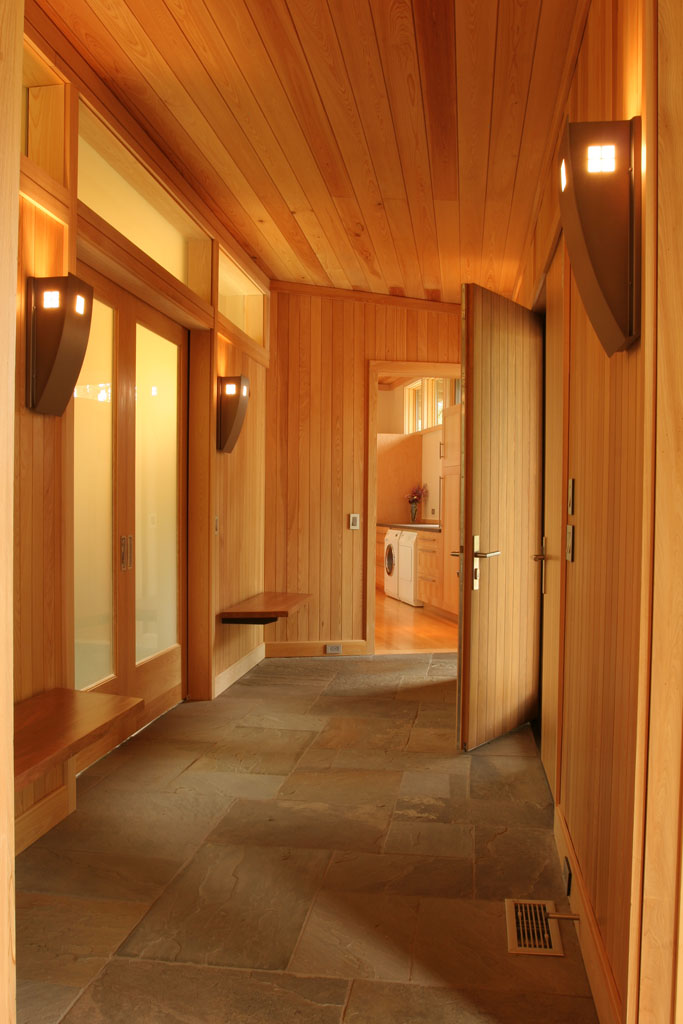
Inside the home, the owners chose to work with materials that not only complemented the design aesthetic of the retreat but also were also manufactured within the region. According to McPherson, the cabinets, woodwork, stone, concrete countertops, and some of the furniture came from local or regional resources. For example, the aggregate in the concrete kitchen countertops was made from river pebbles that a local craftsman had obtained from a dredged river.
Natural stonework was also used around the wood-burning stoves. “The stones came from the owners’ property,” says McPherson. “In addition to being an environmentally conscious choice, the stones helped connect the home’s interior with its exterior from a design perspective.”
Other regionally sourced materials include cypress (in the ceilings) and maple (in the floors, cabinets, and window trim).
“It was important to the owners that they use regional materials, for both environmental reasons as well as to foster a connection to this specific area,” says McPherson. “The local or regional element isn’t necessarily what most people consider when building green, but it matters.”
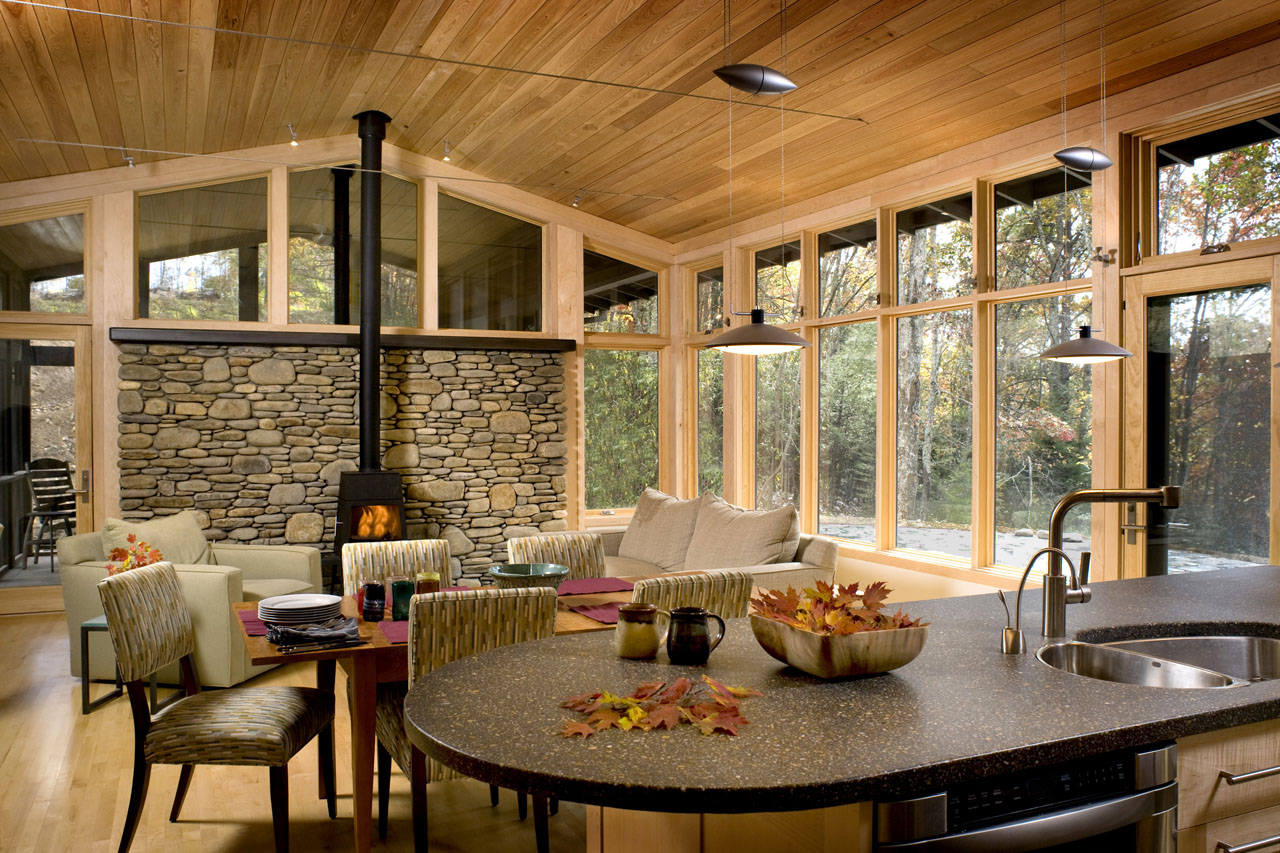

Lisa Taylor Minor
Lisa Taylor is a freelance writer and marketing consultant. She has more than 16 years of experience as a communications professional and has worked with a variety of companies in the home products and building materials industry. Originally from Memphis, TN, Lisa earned a BA in Journalism from the University of Memphis in 1995 and a MA in Journalism from the University of Memphis in 1997. She spent the first 11 years of her career working in account service for Memphis advertising agencies Thompson & Company, Oden Marketing & Design, and Carpenter/Sullivan. Lisa then spent five years in Nashville, TN, with The Buntin Group, an Adweek Top 100 U.S. advertising agency, and Louisiana-Pacific Corporation, a leading manufacturer of building materials. Lisa currently lives in Denver, CO, and is Principal/Owner of Wazee Marketing.
Website: www.wazeemarketing.com

